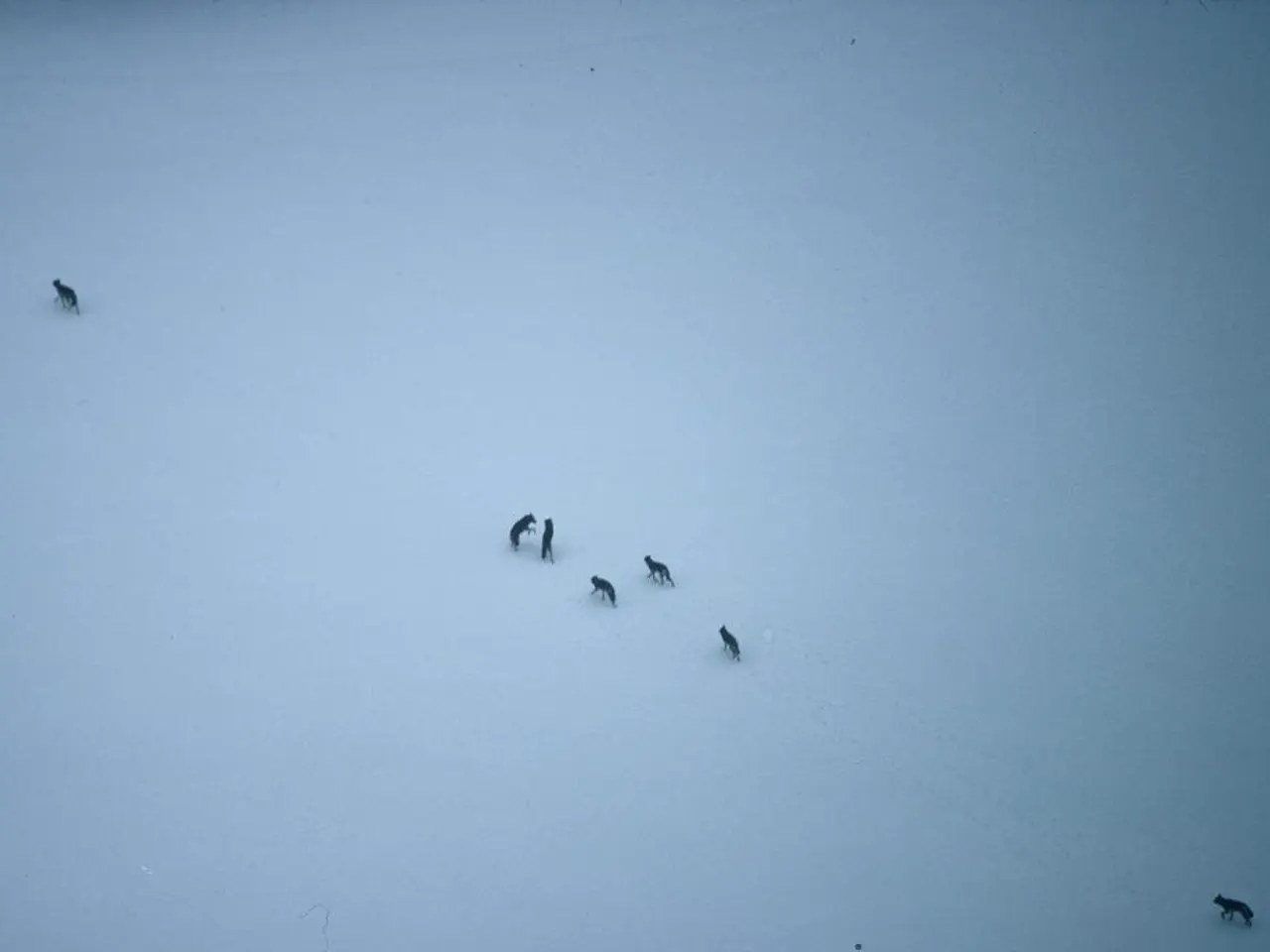Scientists Make Surprise Discovery About the Separation of Dogs from Wolves, Determining it Happened Earlier Than Previously Believed According to a Biologist's Findings
In the fascinating world of coevolution, one relationship stands out as a testament to thousands of years of companionship - the unique bond between humans and dogs. Recent research has confirmed that dogs, unlike their wild counterparts, the wolves, are uniquely attuned to humans. This extraordinary connection is evident in experiments involving hand-raised dog and wolf puppies, as demonstrated in a 2025 study published in Animal Cognition. At a mere few weeks old, dogs are more drawn to human attention, make more eye contact, and skillfully interpret human gestures compared to wolves. This early affinity lays the foundation for the deep, cooperative bond that would evolve over millennia into the extraordinary human-dog relationship we see today. Dogs exhibit a wider range of expressions, including ear positions signaling ambivalence or submission, more tail wagging, gazing, and proximity-seeking behaviours. On the other hand, wolves, despite identical socialization, remain more independent. The findings underscore the complexity of human-animal relationships, as dogs' social flexibility is shaped by both evolution and human interaction. Humans, too, respond differently to dogs and wolves, showing more frequent and positive facial expressions toward dogs. The genetic ancestors of modern dogs split from the wolf lineage before the Last Glacial Maximum, much earlier than prior estimates suggested. Scientists sequenced the genome of a 35,000-year-old wolf from Siberia's Taimyr Peninsula to resolve the puzzle of dog domestication. Interestingly, certain Arctic dog breeds still retain between 1 and 27 percent of their DNA from the ancient Taimyr wolf. Archaeological evidence from Eastern Siberia's Cis-Baikal region shows that some ancient hunter-gatherer groups treated dogs and wolves with mortuary care comparable to that given to humans, suggesting a level of recognition and respect for these animals. Detailed studies of these burials reveal that certain animals were recognized as distinct individuals, perhaps even seen as possessing 'souls'. Over thousands of years of domestication, dogs have evolved to read human gestures, respond to social cues, and seek human companionship actively. This evolutionary process has been fuelled by the bidirectional influence of human interaction. In conclusion, the extraordinary connection between humans and dogs is a product of evolutionary domestication and the bidirectional influence of human interaction. The unique abilities of dogs to interpret human emotions and expressions have been honed over millennia, making them our most loyal and understanding companions.







